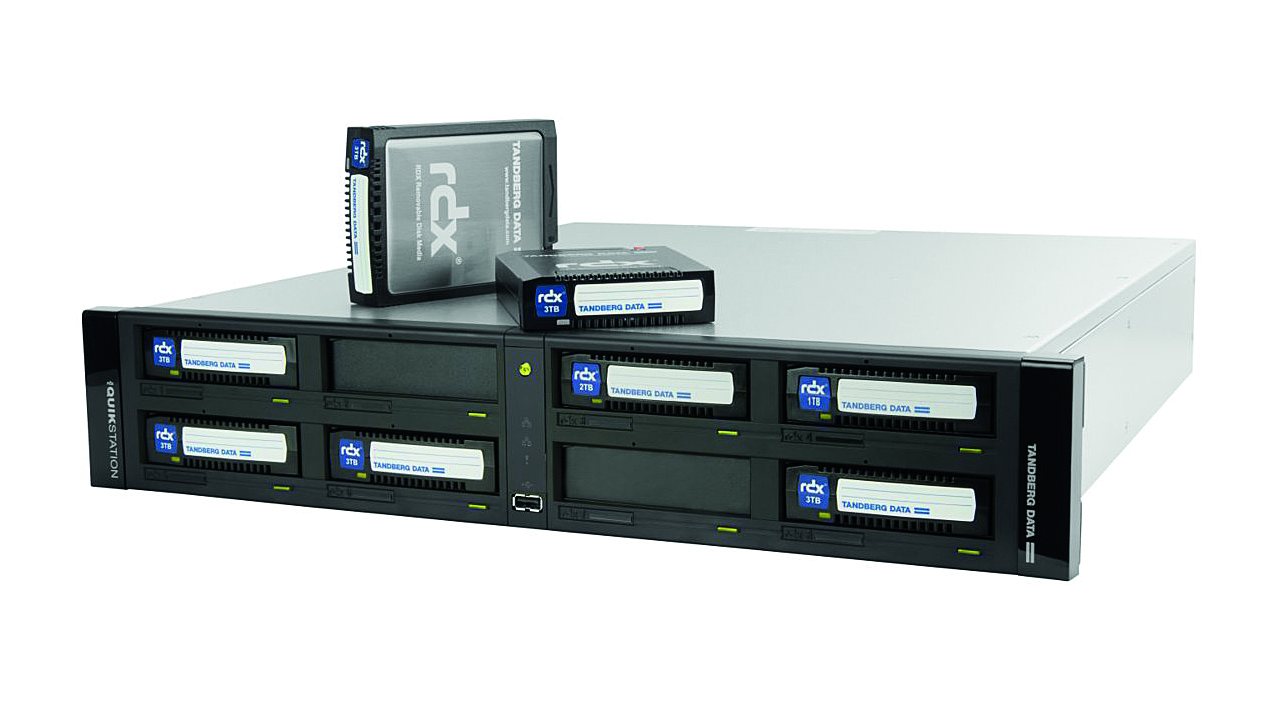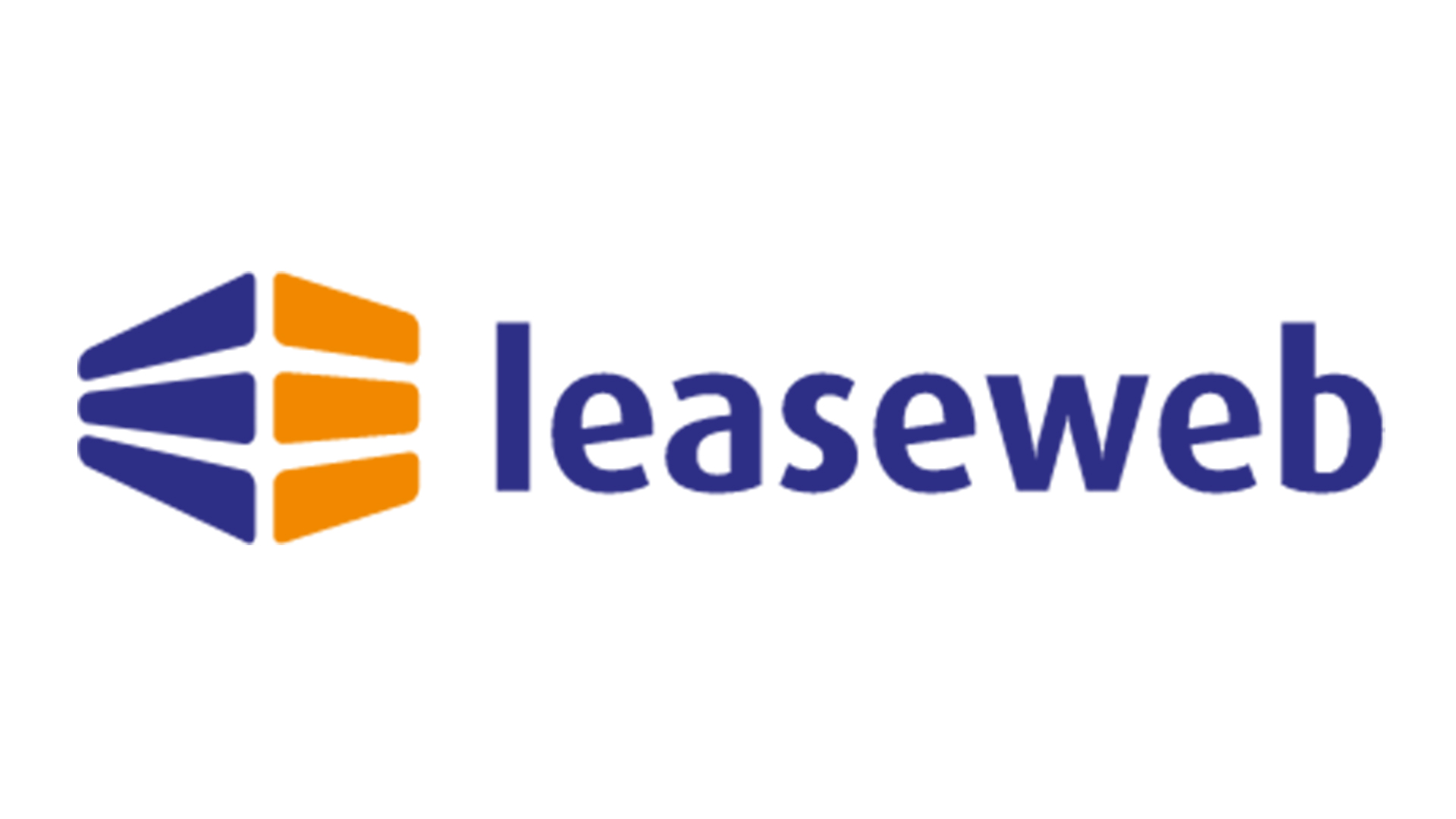Tandberg Data RDX QuikStation 8 review
A highly versatile and speedy RDX IP SAN backup appliance that’s priced right for SMBs


The QuikStation 8 is a great, affordable solution for SMBs that want total control over their backups. Along with good performance and virtually unlimited capacity, it has the power to handle multiple backup jobs simultaneously, and the myriad device emulation modes ensure it'll work with almost any backup product.
-
+
Huge potential capacity; Virtually unbeatable compatibility; Good value

Tandberg Data's RDX removable drive technology is a great backup option for small businesses. The sturdy RDX cartridges are built to last, the hardware is cheaper than LTO tape drives, and the latest 4TB cartridges clearly show there's no slacking in the development department.
The new QuikStation 8 makes the format even more appealing, with big improvements over the QuikStation 4. This 2U rack chassis houses eight SATA RDX drives, presented as iSCSI targets, with quad Gigabit Ethernet connections, plus a single 10GBase-T port. Inside, the processor's been upgraded from an Intel Atom to a much more potent 3.6GHz Core i3.
It also offers even more emulation modes than before: by default, the appliance presents all eight drives as separate targets, which appear to initiators as standard removable drives. But alternatively, it can now emulate a single disk autoloader with eight slots, or two separate fixed or removable logical volumes, using the upper or lower rows of drives.
LTO tape library emulation also makes a welcome return: the appliance can now pretend to be a Tandberg Data StorageLoader LTO with eight slots and one LTO-3 drive, or a StorageLibrary T24 with two LTO-3 drives. If you want the best of both worlds, the hybrid mode lets you have a four-slot StorageLoader LTO and four standard RDX drives.
On top of all this, there's also a protected mode, which presents the drives as fixed or removable logical volumes with either single or dual-drive redundancy. Along with support for SSD-based cartridges, Tandberg also provides free software utilities for encrypting cartridges or turning them into WORM (write once read many) media for regulatory compliant archives.
It's all controlled from a powerful web interface: this opens with a list of drives and cartridges, from which you can eject, erase or test selected media. Sensibly, when a host is logged on to a drive, you can't erase its media from the console, nor use the manual unload buttons on the appliance.
The quad Gigabit ports default to a bonded group for failover, but you can change them to a load-balanced team. We went straight for 10GbE testing, giving the high-speed port a fixed IP address and linking it up to our Netgear XS716E 10GbE switch. To test performance, we started with a Lenovo System x3550 M5 Windows server, logged on to a removable drive over 10GbE. The resultant read and write speeds of 99MB/sec and 80MB/sec (as reported by Iometer) represent an increase of 15 percent over the QuikStation 4 - a nice boost, if not a huge one.
Sign up today and you will receive a free copy of our Future Focus 2025 report - the leading guidance on AI, cybersecurity and other IT challenges as per 700+ senior executives
The QuikStation 8's faster hardware made its presence felt more strongly in our multiple initiator tests. Here, with a second Xeon E5-2600 v4 server logged on to another drive, we saw cumulative read and write speeds of 190MB/sec and 150MB/sec; with a third Xeon v4 server in the mix, speeds ramped up to 285MB/sec and 221MB/sec.
For compatibility testing, we called up a Windows Server 2016 host running Veritas Backup Exec 16. We had no problems configuring a single RDX drive as a removable backup device, and watched Backup Exec secure 25GB of data at an average of 79MB/sec - then eject the media as requested. Swapping to the eight-slot RDX autoloader mode also presented Backup Exec with a single drive target. However, when the backup job had ejected the current cartridge, it cycled to the next available slot, ready for the next scheduled backup.
LTO tape library emulation also worked seamlessly with Backup Exec; in this configuration, its two targets were presented as an HP Ultrium-3 tape drive and medium changer with eight slots. After a restart, Backup Exec picked up the hardware automatically and revealed a new robotic tape library in its storage pane.
The QuikStation 8 is a great, affordable solution for SMBs that want total control over their backups. Along with good performance and virtually unlimited capacity, it has the power to handle multiple backup jobs simultaneously, and the myriad device emulation modes ensure it'll work with almost any backup product.
Verdict
The QuikStation 8 is a great, affordable solution for SMBs that want total control over their backups. Along with good performance and virtually unlimited capacity, it has the power to handle multiple backup jobs simultaneously, and the myriad device emulation modes ensure it'll work with almost any backup product.
2U rack chassis
3.6GHz Core i3-4160
16GB DDR3
8 x SATA RDX drives
4 x Gigabit Ethernet
1 x 10GBaseT (Intel X540-T1)
2 x USB 3
3 x USB 2
400W hot-plug PSU (max 2)
Rack mount rails
1yr on-site NBD warranty
Options: RDX cartridges – 2TB, £182; 4TB, £362 (all ex VAT)
Dave is an IT consultant and freelance journalist specialising in hands-on reviews of computer networking products covering all market sectors from small businesses to enterprises. Founder of Binary Testing Ltd – the UK’s premier independent network testing laboratory - Dave has over 45 years of experience in the IT industry.
Dave has produced many thousands of in-depth business networking product reviews from his lab which have been reproduced globally. Writing for ITPro and its sister title, PC Pro, he covers all areas of business IT infrastructure, including servers, storage, network security, data protection, cloud, infrastructure and services.
-
 Google DeepMind CEO Demis Hassabis thinks this one area of the tech industry is probably in an AI bubble
Google DeepMind CEO Demis Hassabis thinks this one area of the tech industry is probably in an AI bubbleNews AI startups raising huge rounds fresh out the traps are a cause for concern, according to Hassabis
By Ross Kelly Published
-
 Everything you need to know about Google and Apple’s emergency zero-day patches
Everything you need to know about Google and Apple’s emergency zero-day patchesNews A serious zero-day bug was spotted in Chrome systems that impacts Apple users too, forcing both companies to issue emergency patches
By Nicole Kobie Published
-
 Ronald Richardson to lead Leaseweb’s global commercial strategy
Ronald Richardson to lead Leaseweb’s global commercial strategyNews The experienced executive has been named Leaseweb’s new CRO as the IaaS provider embarks on the next phase of its growth journey
By Daniel Todd Published
